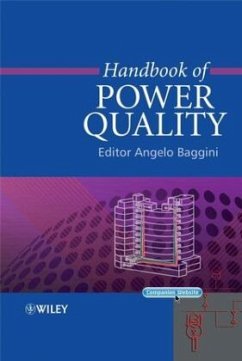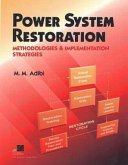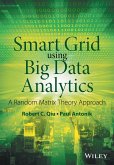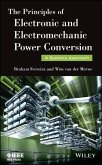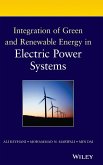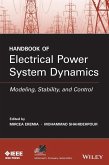Due to the complexity of power systems combined with other factors such as increasing susceptibility of equipment, power quality (PQ) is apt to waver. With electricity in growing demand, low PQ is on the rise and becoming notoriously difficult to remedy. It is an issue that confronts professionals on a daily basis, but few have the required knowledge to diagnose and solve these problems.
Handbook of Power Quality examines the full panorama of PQ disturbances, with background theory and guidelines on measurement procedures and problem solving. It uses the perspectives of both power suppliers and electricity users, with contributions from experts in all aspects of PQ supplying a vital balance of scientific and practical information on the following:
_ frequency variations;
_ the characteristics of voltage, including dips, fluctuations and flicker;
_ the continuity and reliability of electricity supply, its structure, appliances and equipment;
_ the relationship of PQ with power systems, distributed generation, and the electricity market;
_ the monitoring and cost of poor PQ;
_ rational use of energy.
The accompanying website hosts case studies for each chapter, demonstrating PQ practice; how problems are identified, analysed and resolved. The website also includes extensive appendices listing the current standards, mathematical formulas, and principles of electrical circuits that are critical for the optimization of solutions.
This comprehensive handbook explains PQ methodology with a hands-on approach that makes it essential for all practising power systems engineers and researchers. It simultaneously acts as a reference for electrical engineers and technical managers who meet with power quality issues and would like to further their knowledge in this area.
Hinweis: Dieser Artikel kann nur an eine deutsche Lieferadresse ausgeliefert werden.
Handbook of Power Quality examines the full panorama of PQ disturbances, with background theory and guidelines on measurement procedures and problem solving. It uses the perspectives of both power suppliers and electricity users, with contributions from experts in all aspects of PQ supplying a vital balance of scientific and practical information on the following:
_ frequency variations;
_ the characteristics of voltage, including dips, fluctuations and flicker;
_ the continuity and reliability of electricity supply, its structure, appliances and equipment;
_ the relationship of PQ with power systems, distributed generation, and the electricity market;
_ the monitoring and cost of poor PQ;
_ rational use of energy.
The accompanying website hosts case studies for each chapter, demonstrating PQ practice; how problems are identified, analysed and resolved. The website also includes extensive appendices listing the current standards, mathematical formulas, and principles of electrical circuits that are critical for the optimization of solutions.
This comprehensive handbook explains PQ methodology with a hands-on approach that makes it essential for all practising power systems engineers and researchers. It simultaneously acts as a reference for electrical engineers and technical managers who meet with power quality issues and would like to further their knowledge in this area.
Hinweis: Dieser Artikel kann nur an eine deutsche Lieferadresse ausgeliefert werden.
"Those wanting to learn more about power quality issues and causes will find this book well organized, and very easy to read and understand. It is also a good resource in that it contains many up to date references for further in depth study." ( IEEE Electrical Insulation Magazine , May/June 2009)

